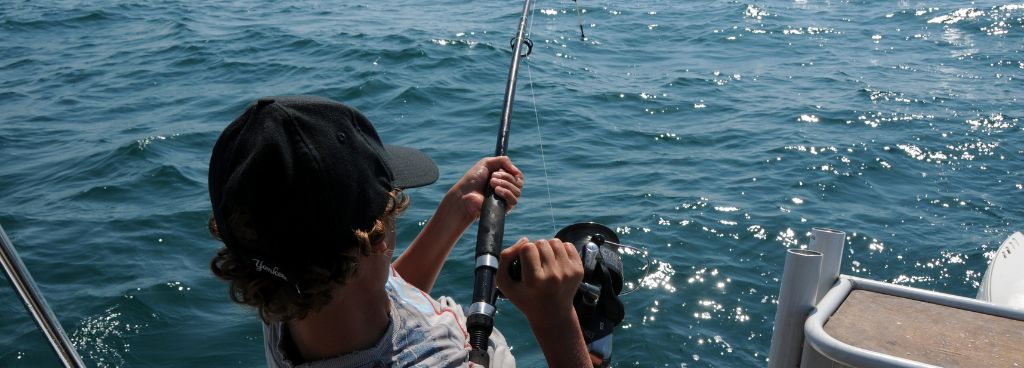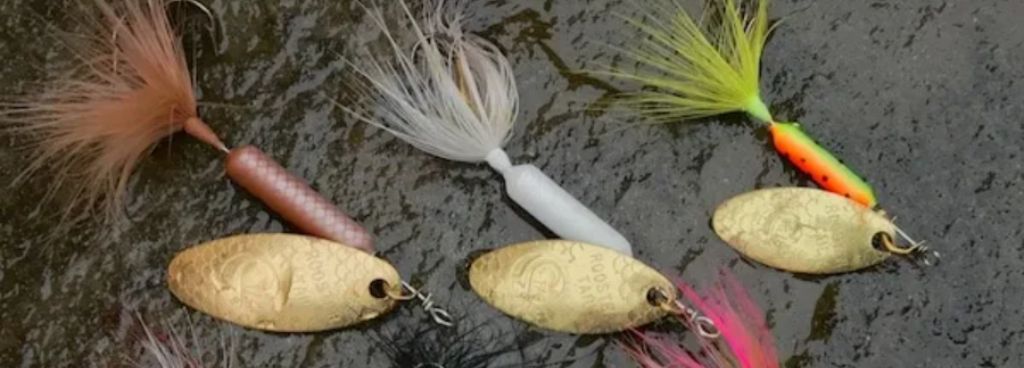Stories Worth Reeling In...
Last Updated on September 19, 2023
Are Rooster Tails good for bass fishing? Yes, Rooster Tails will catch largemouth and smallmouth bass in almost any lake or stream you fish. Rooster Tails are available in a variety of colors and sizes to suit all water conditions, and the simple design requires little technique and skill to entice bass to strike.
If you’re teaching a child to fish or just want to take a break from all the fancy bass lures, tie on a Rooster Tail and see what bites. Let’s look at what it takes for bass to consume a Rooster’s Tail.
Table of Contents
In some circumstances, Rooster Tails can be very productive for catching bass. It’s important to remember, though, that Rooster Tails aren’t always the best bass lure, particularly in heavily fished areas where bass have already seen them. Anglers should think about the particular conditions of their fishing location as well as the behavior of the bass in that area before deciding whether or not to use Rooster Tails.
Tieing on a Rooster Tail spinner is simple. You can use any rod and reel combination, but a medium light spinning setup with a 6 to 10-pound test monofilament line works well. Use a lighter line to cast a 1/16-ounce or lighter spinner.
I usually tie the Rooster Tail to the main line with a Palomar or improved clinch knot. Line twists can be an issue after a long day of casting. Adding a small swivel can eliminate most of the line twists caused by a Rooster Tail.
A small black snap swivel works perfectly at the end of the line. Connect it directly to the spinner for quick and easy color and size changes.
Some people are concerned that a snap swivel attached to the spinner will interfere with its action, but I have found this to be untrue. However, I tie a barrel swivel between the main line and light leader 12 inches in front of the spinner for the smallest Rooster Tails. Otherwise, the swivel dwarfs the lure.
Occasionally, I target feisty smallmouth bass by fishing deep structures or rock edges. Adding one or two lead split shot weights works well in these cases. Especially when using a smaller Rooster Tail.
Place the weights approximately 18 inches above the spinner. The blade frequently flutters lazily as it sinks, and an aggressive smallie will catch it on the fall.
Don’t overthink your technique when fishing with Rooster Tails for bass. However, there are a few fundamental tips you should be aware of to get the best lure action and more strikes.
It is common knowledge that largemouth bass clings to cover such as downed trees, overhanging brush, and dock pilings. While Rooster Tails are not weedless, they can be fished in thick cover and along weed edges. Cast the spinner to the edge of the prime bass habitat.
These inline spinners work best in streams and water with current, but they can also spin nicely in still water. I always start my retrieve at the slowest possible speed to keep the blade spinning. If the bass isn’t responding, increase your retrieval rate.
Just because a Rooster Tail is an inline spinner doesn’t mean you must always fish it that way. I’ve caught plenty of bass by getting close and vertically jigging a Rooster Tail in twisted piles of submerged branches or between thick blankets of lily pads.
Allow it to fall naturally before giving it a quick one or 2-foot lift to spin the blade. It drives them insane.

The spinner blade takes a few seconds to engage and begins spinning in still water. As a result, I like to cast a few feet beyond my target. I don’t spook the fish as the lure lands, and it’s spinning nicely by the time it reaches the likely location of a bass.
A steady retrieve isn’t always enough. If the bass becomes finicky, vary the retrieve by adding a twitch or jerking motion with the rod tip. That stuttering effect on the spinner has resulted in numerous strikes for me.
As previously stated, a slow retrieval is ideal for keeping the lure in front of the bass for longer. However, the blade may not spin appropriately in still water at slow speeds.
By adding a bend or twist to the blade of a Rooster Tail, you can quickly improve spinning performance. Experiment with it until you find the best combination of action and

Brighter colors should be used in dirty water with low visibility. When mud or sediment obscures their view, fire tiger, chartreuse, and red stand out more.
Choose muted colors such as browns, white, rainbow trout, and black when the water is clear. The more closely you mimic natural prey, the better your chances of fooling fish when they have more time to see the lure.
When choosing the best colors, consider the lighting conditions as well as the clarity of the water. On cloudy days with murky water, I always start with a gold blade Rooster Tail. In low-light situations, the gold blade provides just the right amount of contrasting flash.
When it comes to the fishing gear you’ll need, I’d recommend sticking with what you’re already familiar with. It’s really not that important, but the most important thing is that you can cast the Rooster Tail.
Because you’ll be using a light lure, you’ll most likely need a light spinning rod. You could cast it with a bait caster, but most people will struggle to get any distance. However, you should not use an ultralight or light-powered rod for bass. A medium-light or medium-powered spinning rod should suffice.
You don’t want to use a super light rod because you’ll need some backbone to set the hook. If your rod is too flimsy, it may snap on the hookset. The casting distance and backbone will be adequate with a medium or medium-light line.
When it comes to fishing lines, you should use braid as your primary line. It will help you get more distance on your casts and will be much more sensitive, allowing you to feel the bite right away. The braided line
A medium light spinning setup with 6 to 10-pound test monofilament line works well for Rooster Tails. Lighter line is recommended for 1/16 ounce or lighter spinners.
Sizes between 1/8 and 1/4 ounce are generally ideal for bass, with 1/6 ounce being a popular choice. Size depends on factors like depth, structure, and retrieval style. The lure may look small in hand but has a different profile in the water.
In dingy water with low visibility, brighter colors like fire tiger, chartreuse, and red stand out better. In clear water or on sunny days, more subdued colors like browns, white, rainbow trout, and black are preferred. Consider gold blades for cloudy days in murky water and silver blades for clear water or sunny conditions.
There are virtually no restrictions on the types of lures that will catch bass. It’s simple to take the pros’ advice and buy a lot of dedicated bass tackle. You could, however, empty your bank account and still not outfish the Worden’s Rooster Tail.
Few lures can claim to catch multiple species in all situations, but the Rooster Tail can. You will catch bass if you use it correctly.